Essential Types of Lighting for Your Kitchen: Best Options for a Well-Lit Space
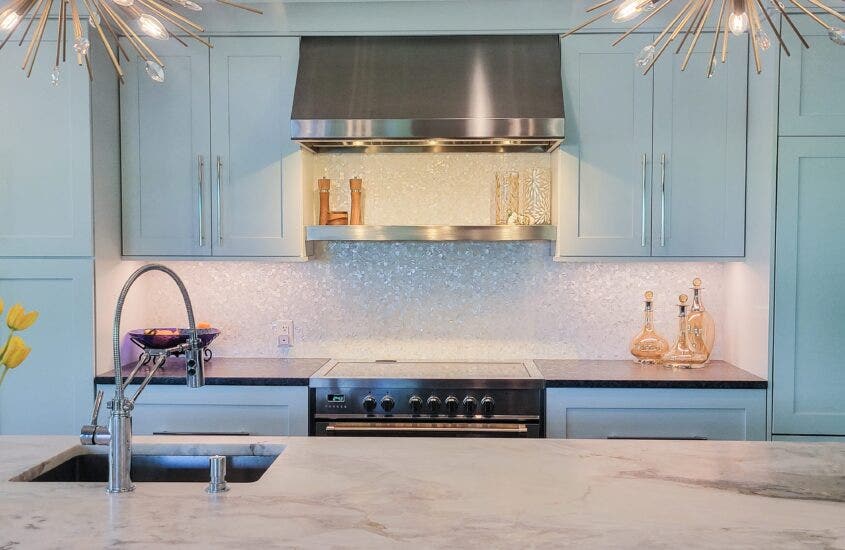
In this article, you will learn about the essential types of kitchen lighting, including ambient, task, and accent lighting, to help you create a well-lit and inviting kitchen space.
Creating the perfect ambiance and functionality in your kitchen is essential, as it is often the heart of your home. One crucial aspect to enhance your kitchen’s design and practicality is choosing the right lighting. There are several types of kitchen lighting that cater to different needs, ensuring that every task and social event in this space runs smoothly and enjoyably.
When planning your kitchen lighting, it’s essential to incorporate a cast of lighting sources, layering ambient (overall), task, and accent or decorative lighting with natural light. This combination not only sets the mood for your kitchen but also ensures that you have ample illumination for intricate tasks like cooking, chopping, or cleaning.
Dive into this article because it explains the top types of kitchen lighting you should consider for a beautifully illuminated kitchen.
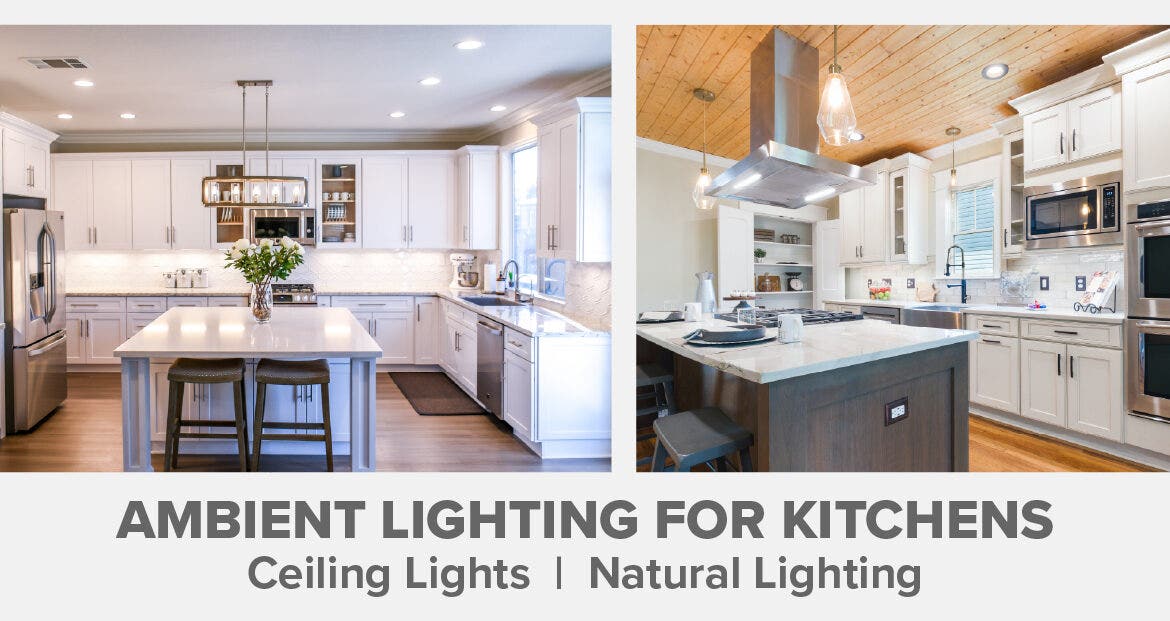
Table of Contents
General or Ambient Lighting
Ambient light, also known as general lighting, offers the most illumination throughout the space, making it an important aspect when setting the tone of your kitchen. It is recommended to provide a uniform light to create a pleasing atmosphere and ensure that your entire kitchen is well-lit.
Consider incorporating recessed lights, a popular choice for ambient lighting in kitchens. With their ability to disappear into the ceiling, recessed fixtures help preserve a sense of openness and space in your kitchen. Recessed lighting is not only versatile but also discreet, and it provides a well-distributed glow across the room. These fixtures can be installed throughout your ceiling to ensure that every corner is adequately lit.
Chandeliers can serve as a functional and stylish centerpiece for your kitchen. Hanging these fixtures above your kitchen island or dining table can create an elegant ambiance and give your space a touch of your personality. Choose a chandelier that suits your taste and size of the room, while ensuring sufficient light for the area.
To achieve the friendly tone you desire, make sure that your ambient light sources are complemented by other elements in your kitchen, such as complementary colors and comfortable seating arrangements. A well-planned lighting design can make your kitchen feel more inviting and enjoyable for you and your guests.
In summary, to create an ideal ambiance in your kitchen, consider using recessed lights and chandeliers for your general lighting needs. Ensure that the amount of light is sufficient, and think about the overall design to make the space warm and welcoming.
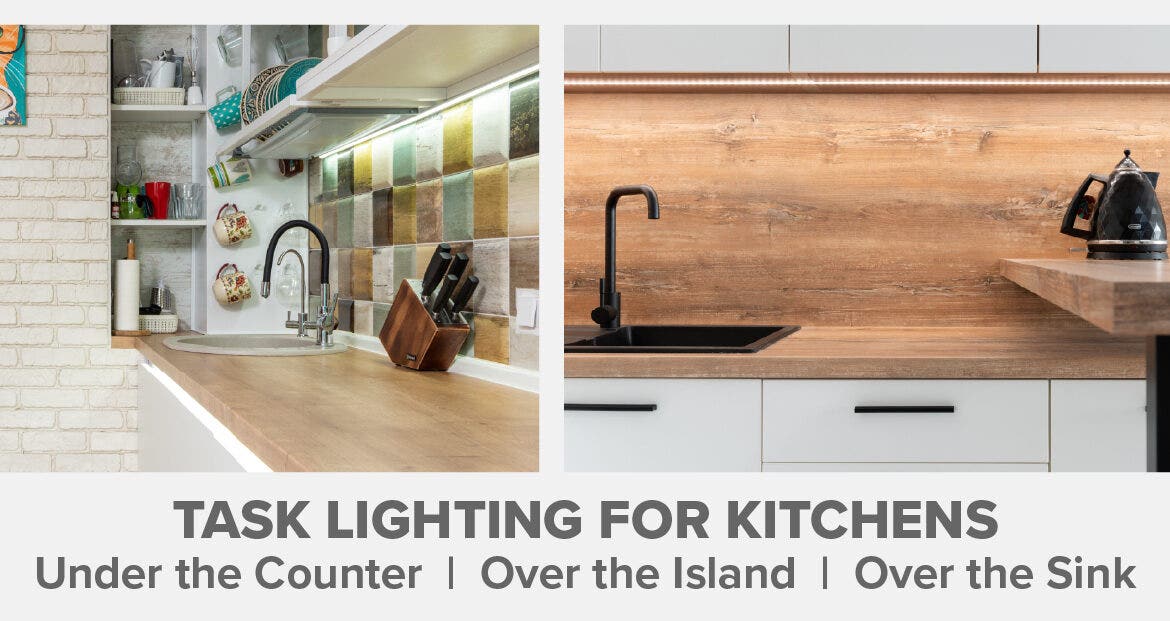
Task Lighting in the Kitchen
When designing your kitchen, it’s important to include effective task lighting for optimal functionality and comfort. Task lighting refers to focused light sources that help you complete specific tasks, like chopping vegetables, cooking, and washing dishes, with greater convenience and safety.
Lighting the Kitchen Island
Task lighting is essential for your kitchen island, as it’s a popular spot for meal prep, casual dining, and even working. To keep the area well-lit, consider installing pendant lights above the island, which provide focused light directly onto your work surface. You can also opt for under-cabinet lights specifically designed for islands, which add both functionality and a stylish touch to your kitchen.
Lighting the Sink
Since washing dishes and rinsing produce are common tasks at your kitchen sink, it’s important to have proper lighting in this area. One option to achieve this is by installing an under-cabinet light above the sink, casting a bright light onto your work area. Another option is to install a wall-mounted task light next to the sink, which can be adjusted for optimal illumination.
Under the Edge of the Countertop
To create a well-lit work area around your countertops, consider adding ambient lighting to the underside of the countertop. This type of lighting can be achieved using strip lights, puck lights, or even LED tape. Placing them underneath the countertop edge helps illuminate the workspace, reduces shadows, and adds a touch of sophistication to your kitchen design.
When choosing the right task light for your kitchen, keep in mind the color temperature of the bulbs. A cool white light with a Kelvin rating between 3,000 to 4,500 is generally recommended for kitchens, as it provides a bright and crisp environment for food preparation and cooking.
Overall, incorporating suitable task lighting in your kitchen will not only enhance its functionality but also make your time spent in the space more enjoyable and efficient. Remember to consider the different areas where you need focused light and select the appropriate fixtures and bulbs for a comfortable and well-lit kitchen experience.
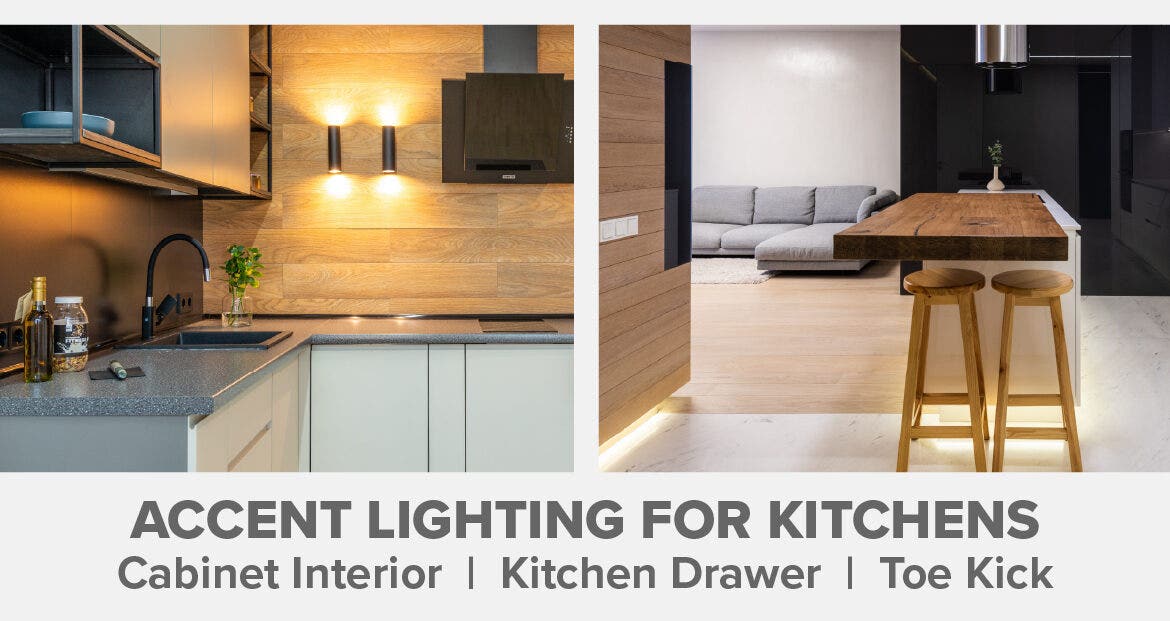
Accent Lighting for Aesthetic Appeal
Accent lighting is a fantastic way to enhance the overall look and feel of your kitchen. You can create a cozy atmosphere and showcase your unique sense of style by installing pendant lights, sconces, or decorative lighting.
One of the most popular types of accent lighting for kitchens is pendant lighting. Pendant lights can be hung over your kitchen island or dining table to create a focal point and add visual interest. Moreover, they come in various shapes, sizes, and styles, so you can easily find the perfect pendants to complement your kitchen’s design.
In addition to pendant lights, wall sconces are another excellent option for accent lighting in your kitchen. Wall sconces can be used to highlight interesting architectural features, add a touch of elegance to your space, or provide soft ambient lighting near your dining area. With numerous designs available, you can choose wall lights that perfectly suit your taste and decor.
Decorative lighting is also a great way to inject personality into your kitchen. Options such as table lamps, floor lamps, or even unique lighting fixtures like chandeliers can add a touch of whimsy and warmth to your space. These options not only serve as functional accent lights but also double as statement pieces that showcase your style.
Inside Cabinetry
Installing accent lights in cabinets with glass doors can beautifully showcase your dishware, glassware, or cookbooks. Consider using small LED strip lights or puck lights to illuminate your favorite items. You can even use these inside open shelves to create a warm and inviting atmosphere.
Inside Drawers
Adding accent lights to drawers can not only enhance the overall look of your kitchen, but also improve its function. Imagine opening a drawer to find utensils, tools, or spices illuminated by a soft glow that makes it easier to see and pick what you need. LED tape lights or motion-activated lights are good options for adding this touch of class and convenience to your drawers.
Toe Kick Lighting
Toe kick lighting refers to the placement of accent lights along the base of your cabinets. Adding this type of lighting can create a welcoming ambiance and even make your kitchen appear larger, as the light accentuates the lines of the space. LED strip lights work well for toe kick lighting, and their low profile makes them easy to install and conceal.
When incorporating accent lighting in your kitchen, consider how each type of light interacts with your existing ambient and task lighting. By balancing these three elements, you’ll create a well-lit and inviting space that reflects your unique taste. Remember, accent lighting should enhance and support the overall design of your kitchen, so feel free to get creative and find the perfect combination of pendants, wall sconces, and decorative lighting that will help make your space feel like home.
Lighting the Kitchen Island
Choosing the right kitchen island lighting is essential for creating a warm and inviting atmosphere in your cooking space. With a few thoughtful considerations, you can find the perfect light fixture to illuminate your kitchen island.
First, consider the size and style of your kitchen island. This will help determine the type and number of lighting fixtures you need. Larger islands may require multiple pendants or a combination of different light sources.
One popular choice for kitchen island lighting is pendant lights. These fixtures are versatile, stylish, and provide a strong task lighting due to their downward orientation. Pendant lights come in various designs, shapes, and sizes, allowing you to find the perfect piece for your space.
Another factor to consider when lighting your island is the height of your ceiling. Hang your light fixtures at a height that offers adequate, yet still comfortable, illumination. A good rule of thumb is to suspend hanging lights 28 to 34 inches above the kitchen island.
In addition to pendants, you can also explore other lighting fixtures such as chandeliers, woven pendants, or even modern LED strips. This will allow you to customize your kitchen island lighting to your specific taste and requirements.
When choosing your island lighting, make sure it complements your kitchen’s overall design. Consider the color, material, and style of both your light fittings and your kitchen island to create a cohesive and visually appealing space.
In conclusion, be thoughtful about your lighting choices, and ensure your kitchen island is suitably lit, creating a welcoming and functional space for you and your guests to enjoy.
Lighting and Kitchen Renovation
When planning a kitchen renovation, one essential aspect to consider is the lighting. A well-lit kitchen can drastically improve the overall look and functionality of your renovated space. During the renovation process, you’ll need to think about wiring, hardware, and the placement of junction boxes to accommodate the various types of lighting in your kitchen.
Before you start tearing down walls or pulling up floorboards, take some time to map out your lighting plan. Determine the locations of your ceiling joists, as these will play a crucial role in the placement of your light fixtures. You’ll need to identify the ideal spots for ambient, task, and accent lighting in addition to natural light sources.
Ambient lighting is the general, overall lighting in your kitchen and is usually provided by recessed lights or flush-mount fixtures affixed to the ceiling. These fixtures should be evenly spaced and positioned between the ceiling joists to provide uniform illumination throughout the space.
Task lighting, on the other hand, is focused on specific areas where you need more illuminated, like countertops or the kitchen island. Under-cabinet lighting is a popular choice for task lighting, as it shines directly onto your workspace. Carefully consider the wiring and hardware needed for these installations, and consult with a professional if necessary.
Accent lighting adds visual interest to your kitchen by highlighting architectural details and décor. It could be in the form of pendant lights above your kitchen island, or LED strip lights installed inside glass-front cabinets. When planning your accent lighting, think about the distances between your junction boxes and light fixtures, as well as the type of wiring required to power them.
Proper lighting is a crucial aspect of any kitchen renovation and can greatly enhance the overall look and feel of the space. By taking the time to plan your lighting layout during the renovation process, you can ensure that your kitchen is not only visually appealing but also functional and practical for your everyday needs.
Creating the Right Mood with Lighting
When designing your kitchen, it’s essential to consider how lighting can affect the mood and atmosphere. There are three main types of lighting that can help you achieve the desired ambiance: ambient lighting, task lighting, and accent lighting.
Ambient lighting is the general, overall illumination of the room. It helps create a welcoming and warm atmosphere, perfect for socializing with family and friends. Using dimmer switches, you can easily adjust the intensity of your ambient lights to set the right mood for various occasions.
Task lighting, on the other hand, focuses on specific work areas in your kitchen, such as countertops, the sink, or stovetop. This targeted illumination is essential for safe and efficient food preparation, ensuring that you can see clearly while chopping, cooking, and cleaning. Under-cabinet lights or pendant lights over your countertop can be excellent choices for task lighting.
Accent lighting is often used to highlight specific design elements, such as architectural features, artwork, or special decorations. By strategically placing accent lights, you can create depth and drama in your kitchen, making it feel more luxurious and personalized.
Combining these different types of lighting will help you create the perfect atmosphere for every occasion. For instance, using ambient lighting in conjunction with accent lights will elevate the mood, while task lighting adds practicality and functionality.
In conclusion, making conscious choices in lighting can transform your kitchen’s atmosphere, tailoring it to suit your needs. Remember to strike a balance between ambient, task, and accent lighting, and consider incorporating dimmer switches for added flexibility. With well-planned lighting, you can create a space that feels both inviting and functional.
Hints and Tips for Kitchen Lighting
Having a well-lit kitchen is essential for both functionality and aesthetics. To achieve the perfect lighting for your kitchen, consider these tips and ideas that incorporate various lighting types and techniques.
First and foremost, determine your kitchen’s design scheme. This will help you understand what style of lighting fixtures will best complement your space. Consult with a designer if you’re unsure where to start or need guidance on selecting the right elements for your kitchen.
Next, consider cabinet lighting. Installing LED lights under your cabinets will not only illuminate your countertops for easier food preparation but also add a touch of ambiance to your kitchen. For added functionality, consider using light strips that can be easily mounted inside cabinets and drawers to make finding items in dimly lit spaces a breeze.
Don’t forget about toe-kick lighting. This lesser-known lighting technique involves installing LED lights in the recessed space beneath your cabinets. Toe-kick lighting provides subtle illumination for your kitchen floor, making it both a practical and stylish choice for your lighting design.
When selecting bulbs for your various lighting fixtures, opt for energy-efficient LED bulbs. LED bulbs consume less energy than traditional incandescent bulbs, saving you money on your energy bills while also being environmentally friendly.
Finally, keep in mind that the best kitchen lighting solution is often a combination of different lighting types. Aim for a balance of ambient, task, and accent lighting to create a comfortable and functional space that suits your needs and style preferences.
By following these tips and incorporating various lighting techniques, you’ll be able to create a beautifully lit kitchen that not only serves your practical needs but also enhances the overall look and feel of your space.
What are the main categories of kitchen lighting?
There are three main categories of kitchen lighting: ambient, task, and accent lighting. Ambient lighting provides overall illumination in the space, task lighting focuses on specific areas for activities like cooking or cleaning, and accent lighting highlights decorative features. Layering these different types of lighting can help create a well-lit, functional kitchen.
How to choose the best light bulbs for my kitchen?
Consider the Kelvin rating of the light bulbs for your kitchen. Opt for cool white light with a rating of 3,000 to 4,500 Kelvin. This type of light is better for food preparation and cooking spaces, while warmer, yellower light with a lower Kelvin rating is more suitable for living spaces. Also, think about energy efficiency and choose LED bulbs, which last longer and consume less energy.
What factors to consider when designing kitchen lighting?
When designing kitchen lighting, consider the layout and function of your space. Determine where you need task lighting, such as under-cabinet lighting or over an island. Find ways to incorporate ambient light, like recessed ceiling lights or a chandelier. Add some accent lighting to highlight artwork, architectural details, or open shelves. Planning a good lighting design will ensure a bright, functional kitchen.
How to achieve optimal brightness in my kitchen?
To achieve optimal brightness in your kitchen, layer different types of lighting sources. Combine ambient lighting, task lighting, and accent lighting with natural light from windows or skylights. Use the appropriate levels of brightness for each lighting purpose, such as brighter lights for task areas and softer lights for creating ambiance. Adjusting your lighting according to your needs will result in a well-lit kitchen.
How to balance ambient and task lighting in my kitchen?
Balancing ambient and task lighting in your kitchen involves utilizing various light sources for different purposes. Ambient lighting should provide overall illumination, while task lighting should focus on work areas. Install recessed or hanging lights for ambient lighting and use under-cabinet lights, pendants, or track lights for task lighting. Adjusting the brightness levels of each light source will help you achieve a balanced and comfortable kitchen environment.
What are the best kitchen lighting ideas for a low ceiling?
For low-ceiling kitchens, consider flush-mounted or semi-flush-mounted lighting fixtures that don’t hang too low. Recessed lighting is also a great choice for low ceilings, providing ample light without taking up valuable height. Another option is to use wall-mounted sconces or track lighting, which can help to distribute light evenly across your kitchen without overwhelming the space with large fixtures.





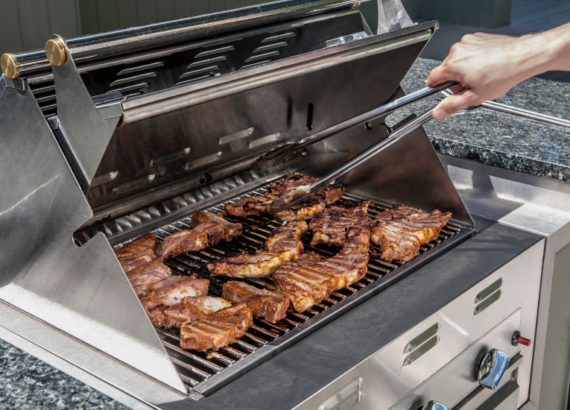
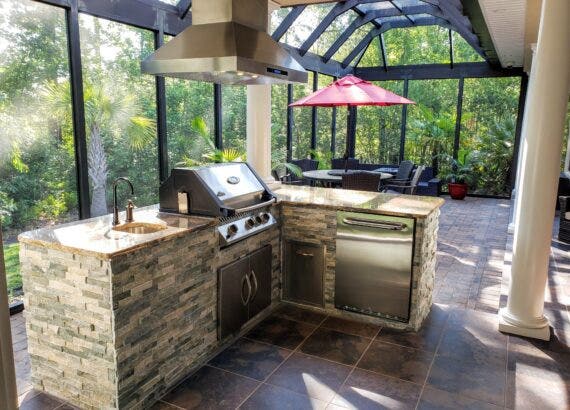
Comments are closed.